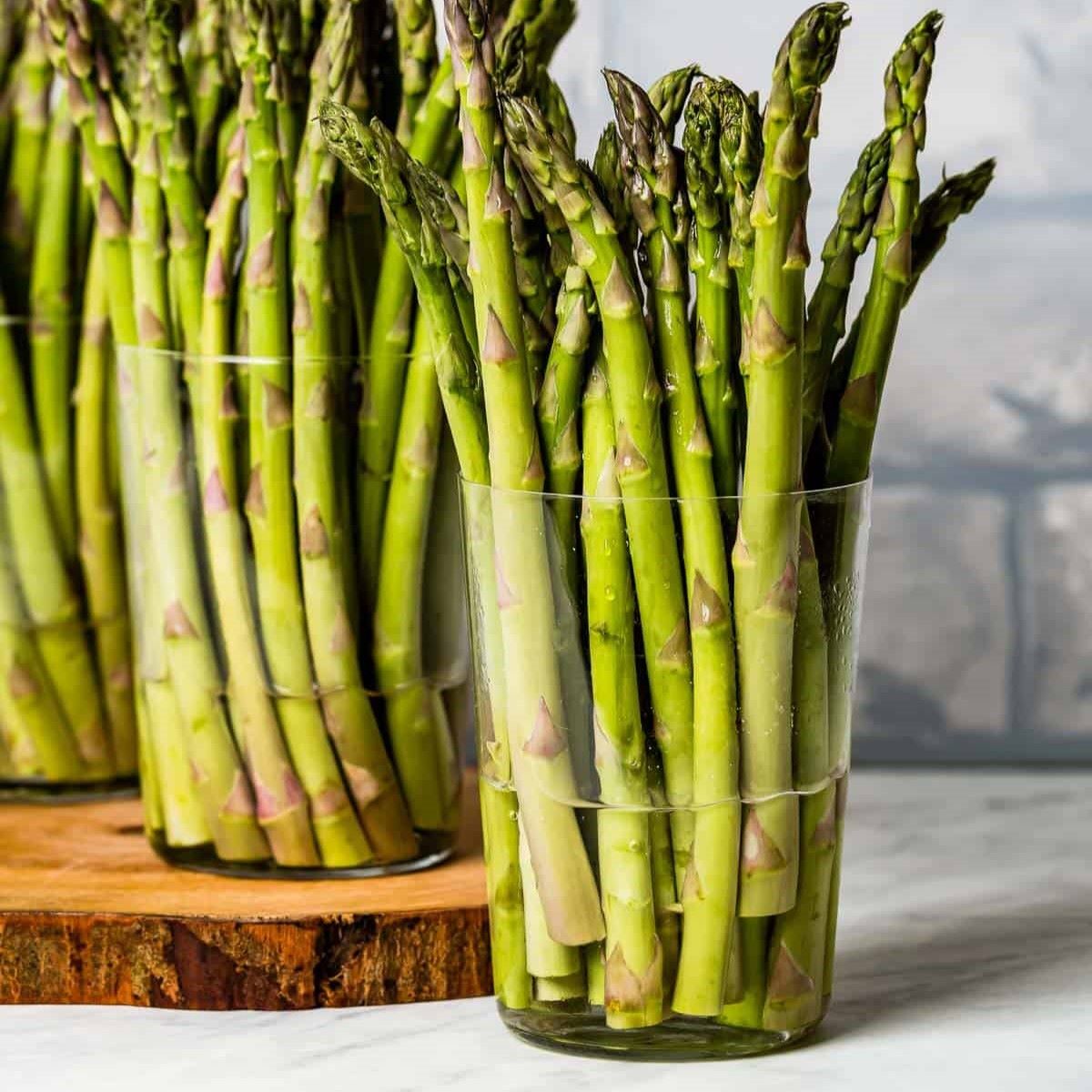

Articles
How To Store Fresh Asparagus
Modified: February 24, 2024
Learn the best methods for storing fresh asparagus in this comprehensive article, packed with tips and tricks to keep your asparagus fresh and delicious for longer.
(Many of the links in this article redirect to a specific reviewed product. Your purchase of these products through affiliate links helps to generate commission for Storables.com, at no extra cost. Learn more)
Introduction
Asparagus is a delicious and nutritious vegetable that is enjoyed by many. Whether you grow your own or purchase it from the store, knowing how to properly store fresh asparagus is key to keeping it fresh and tasty for longer. In this article, we will explore different methods of storing fresh asparagus to ensure maximum freshness and flavor.
When it comes to storing asparagus, the key is to maintain its natural crispness and vibrant green color. Asparagus is highly perishable, and improper storage can lead to wilting, loss of flavor, and a rubbery texture. By following the right techniques, you can prolong the shelf life of your asparagus and enjoy it at its peak for days or even weeks.
In the following sections, we will discuss how to choose the freshest asparagus, various storage methods, and tips to maintain its freshness. Whether you plan to use your asparagus in a recipe right away or save it for later, these tips will help you store your asparagus in a way that preserves its quality and flavor.
Key Takeaways:
- Keep asparagus fresh by storing it upright in water or a damp paper towel in the fridge. Choose vibrant, firm stalks and use within a few days for the best flavor and texture.
- To preserve asparagus for longer, freeze it after blanching and flash freezing. Follow tips to maintain freshness, such as keeping it cool and handling it gently.
Read more: How To Store Fresh Cut Asparagus
Choosing Fresh Asparagus
When selecting asparagus, it’s important to choose stalks that are fresh and in prime condition. Look for these key characteristics to ensure you’re getting the best quality:
- Color: Fresh asparagus should have a vibrant green color throughout the stalks, with no signs of yellowing or browning. The tips of the asparagus should be tightly closed and compact.
- Texture: Gently squeeze the asparagus near the base. It should feel firm and have a slight snap when you bend it.
- Thickness: Thicker asparagus spears tend to be more tender and flavorful. However, thinner spears can also be delicious, particularly when they are young and have tight tips.
It’s also important to consider the freshness of the asparagus when making your selection. Look for asparagus with a moist stem end, as this indicates its freshness. Avoid any stalks that appear wilted, shriveled, or slimy.
If you have the opportunity, try to purchase asparagus from local farmers markets or your own garden. Locally sourced asparagus is often harvested at its peak ripeness and has a better flavor compared to asparagus that has traveled long distances or spent time in storage.
By choosing the freshest asparagus available, you’ll be setting the foundation for successful storage and enjoying the best flavor and texture when it’s time to cook.
Storing Asparagus in the Refrigerator
The refrigerator is an excellent place to store asparagus and keep it fresh for several days. Follow these steps to ensure optimal storage:
- Trim the ends: Start by trimming the tough ends of the asparagus stalks. Simply hold each stalk at both ends and bend it until it naturally snaps. Discard the woody ends.
- Prepare a container: Fill a container or a glass with about an inch of water.
- Arrange the asparagus: Place the trimmed asparagus upright in the container, with the cut ends submerged in water. You can also cover the asparagus loosely with a plastic bag or damp paper towel to help retain moisture.
- Store in the refrigerator: Place the container of asparagus in the refrigerator. The cool temperature will help maintain the asparagus’ crispness and freshness.
It’s important to note that storing asparagus in the refrigerator with the ends submerged in water is ideal for maintaining freshness and preventing wilting. The water acts as a hydration source, keeping the stalks from drying out and losing their crunch.
Remember to check the water level daily and replenish it if needed. If the water becomes cloudy, replace it with fresh water to prevent any bacterial growth. By following these simple steps, you can store asparagus in the refrigerator for up to a week while keeping it fresh and ready to be used in your favorite recipes.
Prepping Asparagus for Storage
Before storing asparagus, it’s important to properly prepare and clean the stalks to ensure their freshness. Follow these steps to prep asparagus for storage:
- Trim the ends: Start by trimming the tough ends of the asparagus stalks. Hold each stalk at both ends and bend it until it naturally snaps. Discard the woody ends.
- Wash the stalks: Rinse the asparagus under cool running water to remove any dirt or debris. Gently rub the stalks with your fingertips to ensure a thorough cleaning, especially around the tips.
- Dry the asparagus: After washing, pat the asparagus dry with a clean towel or paper towel. Removing excess moisture helps prevent rotting and extends its shelf life.
- Bundle the asparagus: If you prefer to store the asparagus upright without water, bundle the stalks together with a rubber band or kitchen twine. This helps keep them organized and prevents them from rolling around in the refrigerator.
It’s important to note that prepping the asparagus by trimming the ends and washing it before storage helps maintain its freshness. By removing any excess moisture and keeping the stalks clean, you reduce the chance of mold or decay developing during storage.
Remember to handle the asparagus gently to avoid bruising or damaging the delicate stalks. Proper prepping ensures that your asparagus stays fresh and ready to be used whenever you’re ready to enjoy it!
Storing Asparagus in Water
An alternative method for storing asparagus is to keep the stalks fresh by storing them in water. This method helps retain their crispness and prolongs their shelf life. Here’s how to store asparagus in water:
- Trim the ends: Begin by trimming the tough ends of the asparagus stalks. Snap or cut off about an inch from the bottom.
- Prepare a container: Fill a container or a wide-mouthed vase with a few inches of water. The container should be tall enough to accommodate the length of the asparagus stalks without bending them.
- Place the asparagus in the container: Stand the trimmed asparagus upright in the container, with the cut ends submerged in water.
- Cover the tops: Loosely cover the tops of the asparagus with a plastic bag or a damp paper towel. This helps maintain moisture and prevents the tips from drying out.
- Store in the refrigerator: Place the container of asparagus in the refrigerator. Keep it in the vegetable drawer or in a spot where it won’t get knocked over.
Storing asparagus in water provides the stalks with constant hydration, helping to preserve their freshness and crisp texture. The water acts as a barrier against dehydration, ensuring that the asparagus doesn’t wilt or become rubbery.
Remember to change the water every two to three days to prevent it from becoming stale and to maintain the optimal freshness of the asparagus. With this method, you can store asparagus for up to a week in the refrigerator, ready to be used whenever you need it.
To store fresh asparagus, trim the ends and place the spears upright in a jar or glass with an inch of water. Cover with a plastic bag and refrigerate for up to a week.
Read more: How To Store Fresh Asparagus In Fridge
Storing Asparagus in the Fridge without Water
If you prefer to store asparagus without using water, you can still keep it fresh and crisp using a slightly different method. Here’s how to store asparagus in the fridge without water:
- Trim the ends: Start by trimming the tough ends of the asparagus stalks. Snap or cut off about an inch from the bottom.
- Wrap in a damp paper towel: Take a damp paper towel and wrap it loosely around the trimmed ends of the asparagus. This helps to maintain moisture and prevent drying out during storage.
- Place in a plastic bag: Put the wrapped asparagus in a resealable plastic bag or wrap it loosely in plastic wrap. Make sure to leave some room for air circulation to prevent condensation, which can lead to spoilage.
- Store in the refrigerator: Place the bag of asparagus in the refrigerator, ideally in the vegetable drawer where it can stay cool but not be subjected to freezing temperatures.
Storing asparagus without water helps maintain its natural texture and flavor. The damp paper towel provides a humid environment that keeps the asparagus moist without causing it to become waterlogged or slimy.
Remember to check the paper towel periodically and re-dampen it if it dries out. If you notice any wilting or signs of dehydration, simply rinse the asparagus under cold water before using to revive its crispness.
By storing asparagus in the fridge without water using the damp paper towel method, you can enjoy fresh and delicious asparagus for up to a week or even longer. It’s a convenient and effective way to extend the shelf life of your asparagus while maintaining its quality.
Freezing Asparagus
If you have an abundance of asparagus or want to preserve it for future use, freezing is an excellent option. Freezing asparagus allows you to enjoy its fresh flavor and nutritional benefits for months to come. Here’s how to freeze asparagus:
- Prep the asparagus: Start by washing the asparagus under cool running water to remove any dirt or debris. Trim the tough ends by snapping or cutting about an inch off from the bottom.
- Blanch the asparagus: Blanching helps preserve the color, flavor, and texture of the asparagus. Bring a large pot of water to a boil and add the asparagus. Cook for 2-3 minutes, then transfer the asparagus to an ice bath to stop the cooking process.
- Drain and pat dry: Once the asparagus has cooled in the ice bath, remove it and place it on a clean kitchen towel or paper towels to drain excess water.
- Arrange for freezing: Arrange the asparagus on a baking sheet lined with parchment paper or a silicone mat, making sure the spears are not touching. This step is known as flash freezing and prevents the asparagus from sticking together when frozen.
- Freeze and transfer to bags: Place the baking sheet with the asparagus in the freezer and freeze for about 1-2 hours, or until the asparagus is semi-frozen. Then, transfer the partially frozen asparagus spears to freezer-safe bags or airtight containers. Squeeze out any excess air and seal tightly.
- Label and store: Label the bags or containers with the date and place them in the freezer. Asparagus can be stored in the freezer for up to 6-8 months.
To thaw frozen asparagus, simply remove the desired amount from the freezer and let it thaw in the refrigerator overnight or briefly blanch it in boiling water for a few minutes. Frozen asparagus works well in cooked dishes such as stir-fries, soups, and casseroles, but it may lose some of its crispness after freezing.
By following these steps, you can freeze fresh asparagus and enjoy its delicious taste even when it’s out of season. Freezing asparagus is a great way to minimize waste while preserving its nutritional value and versatility in the kitchen.
Tips for Maintaining Freshness
To ensure the maximum freshness of your asparagus and extend its shelf life, consider these helpful tips:
- Store it upright: Whether you choose to store your asparagus in water or without water, keeping the stalks upright helps prevent them from becoming squished or damaged.
- Keep it cool: Asparagus is sensitive to heat, so store it in the coldest part of the refrigerator, such as the vegetable drawer. Avoid placing it near the fridge door, where temperatures fluctuate more.
- Don’t wash it until ready to use: Washing asparagus too far in advance can introduce moisture, which can lead to rotting. Wait to wash it until you’re ready to cook or eat it.
- Check for moisture: Excess moisture can cause asparagus to become slimy. Make sure the asparagus is dry before storing it to prevent decay.
- Handle it gently: Asparagus is delicate and can bruise easily. Handle it with care to avoid damaging the stalks, which can accelerate spoilage.
- Use it quickly: Asparagus is best enjoyed when fresh, so try to use it within a few days of purchasing or harvesting. The sooner you use it, the better the flavor and texture.
- Don’t store near ethylene-producing fruits: Certain fruits, such as bananas and apples, produce ethylene gas, which can cause asparagus to spoil faster. Keep them separate to maintain freshness.
- Rotate your stock: If you have multiple bunches of asparagus, make sure to use the older ones first. This helps avoid wastage and ensures you enjoy the freshest asparagus possible.
Implementing these tips will help you maintain the freshness and quality of your asparagus for as long as possible. With proper care, you can enjoy delicious and vibrant asparagus dishes whenever you desire.
Conclusion
Knowing how to properly store fresh asparagus is crucial for preserving its flavor, texture, and nutritional value. With the right techniques, you can extend the shelf life of asparagus and enjoy its delicious taste even days or weeks after purchase or harvest.
Whether you choose to store asparagus in the refrigerator with or without water, or opt to freeze it for long-term storage, there are various methods to suit your preferences and needs. Properly trimming and prepping the asparagus, along with storing it in the ideal conditions, are key steps in maintaining its freshness.
Remember to choose the freshest asparagus possible, with vibrant green color, firm texture, and tight tips. This will ensure that you’re starting with the best quality asparagus before even storing it.
Whether you plan to use it in a recipe right away or save it for later use, following the tips for maintaining freshness will help you make the most of your asparagus. Store it in the coldest part of the fridge, handle it gently, and use it within a few days for the best results.
By freezing asparagus, you can also enjoy this nutritious vegetable during off-seasons, as frozen asparagus can be stored for several months without compromising its taste and quality.
So, the next time you have a bunch of fresh asparagus on hand, make sure to store it properly to enjoy its delightful flavor, vibrant color, and health benefits for as long as possible. With these storage tips, you can savor the taste of asparagus in your favorite dishes whenever you desire.
Frequently Asked Questions about How To Store Fresh Asparagus
Was this page helpful?
At Storables.com, we guarantee accurate and reliable information. Our content, validated by Expert Board Contributors, is crafted following stringent Editorial Policies. We're committed to providing you with well-researched, expert-backed insights for all your informational needs.


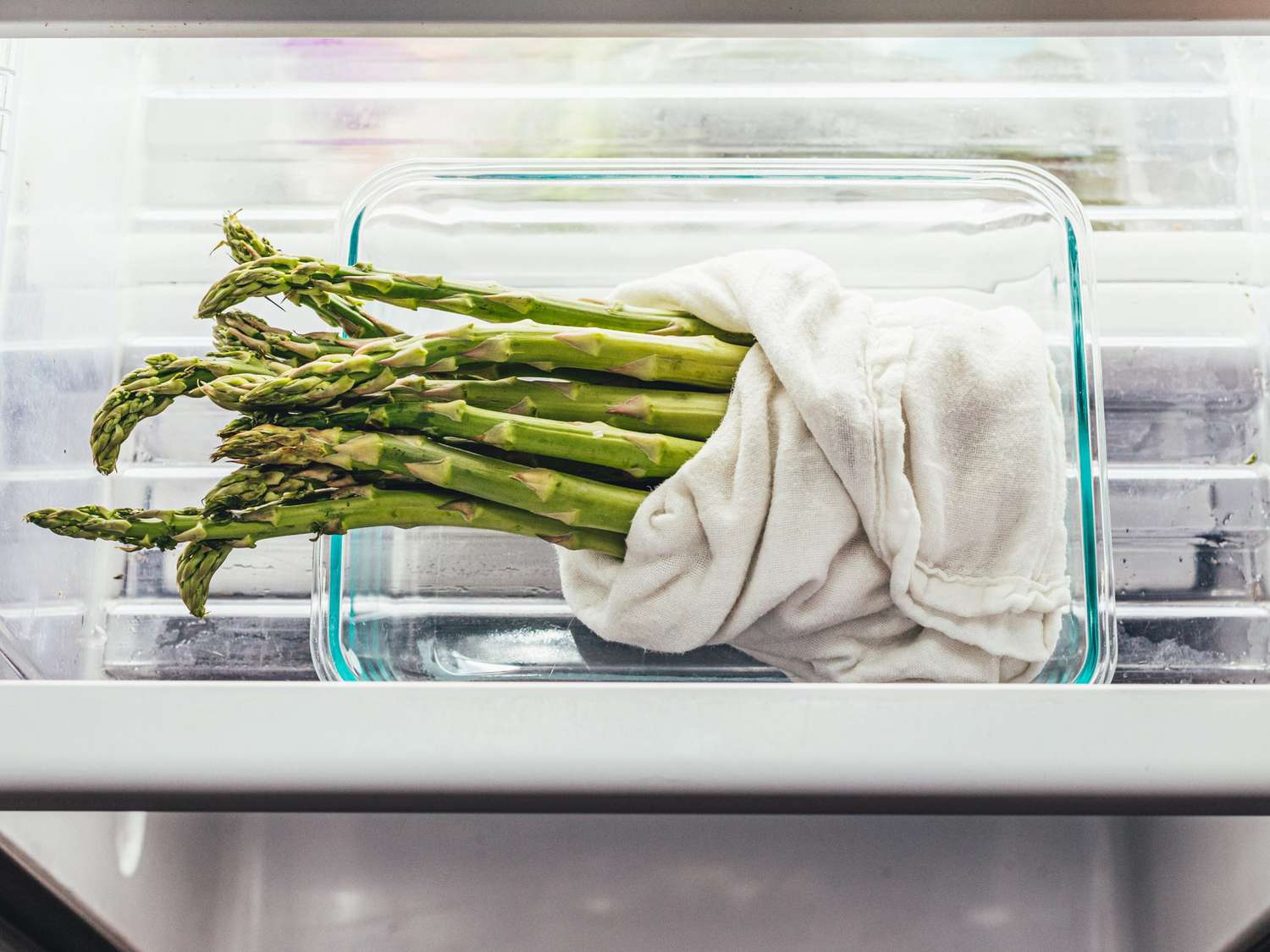
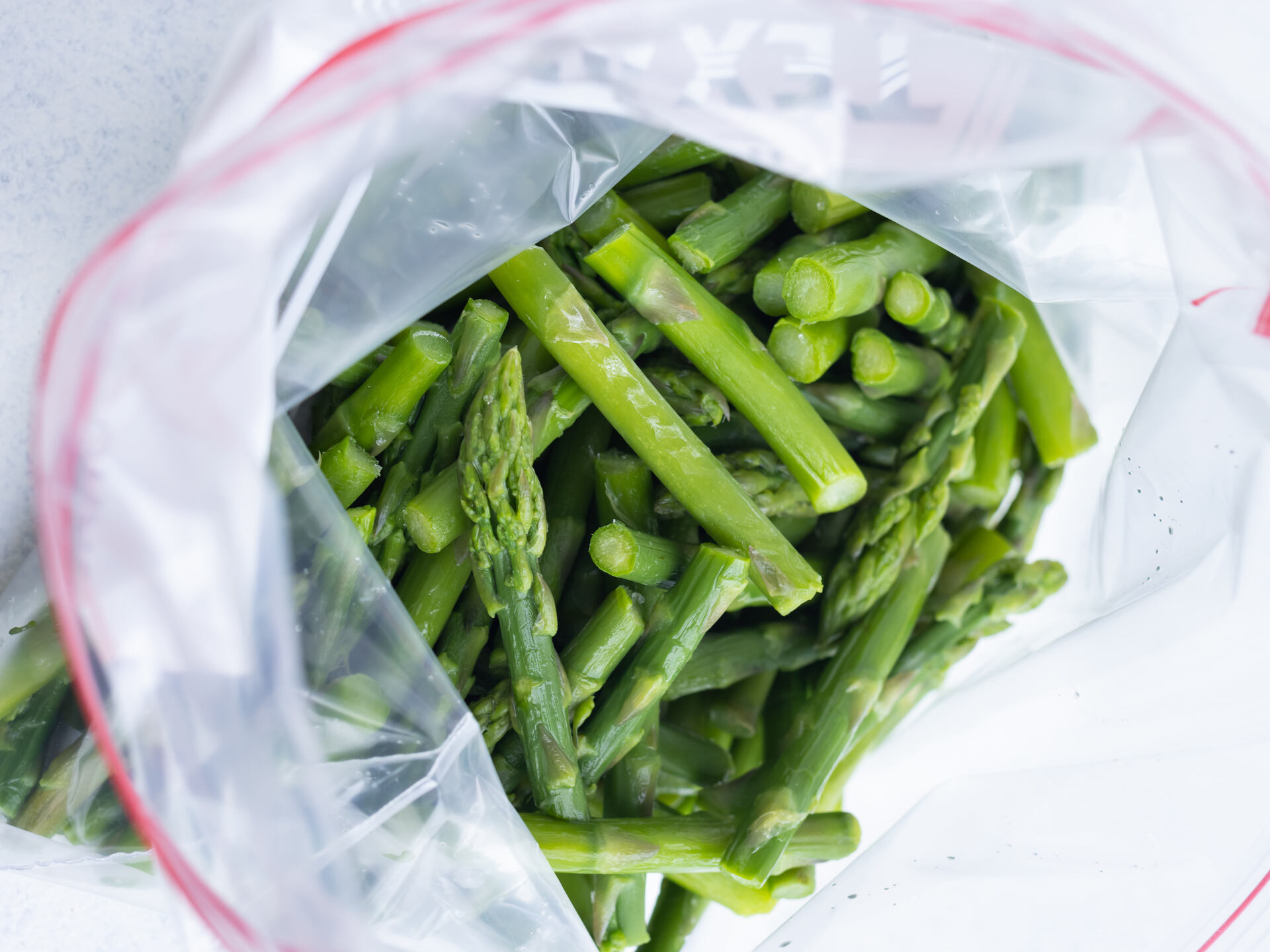

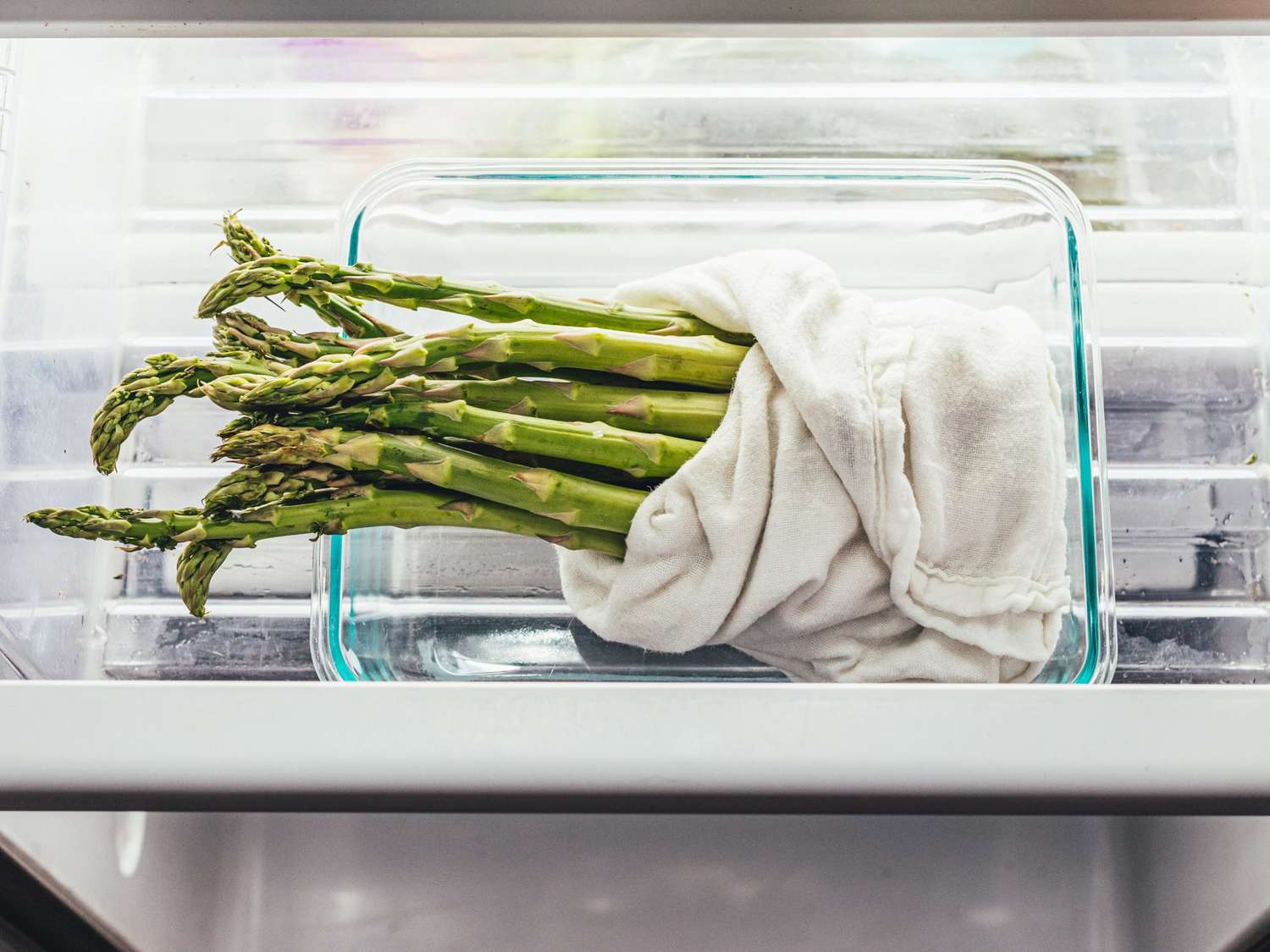

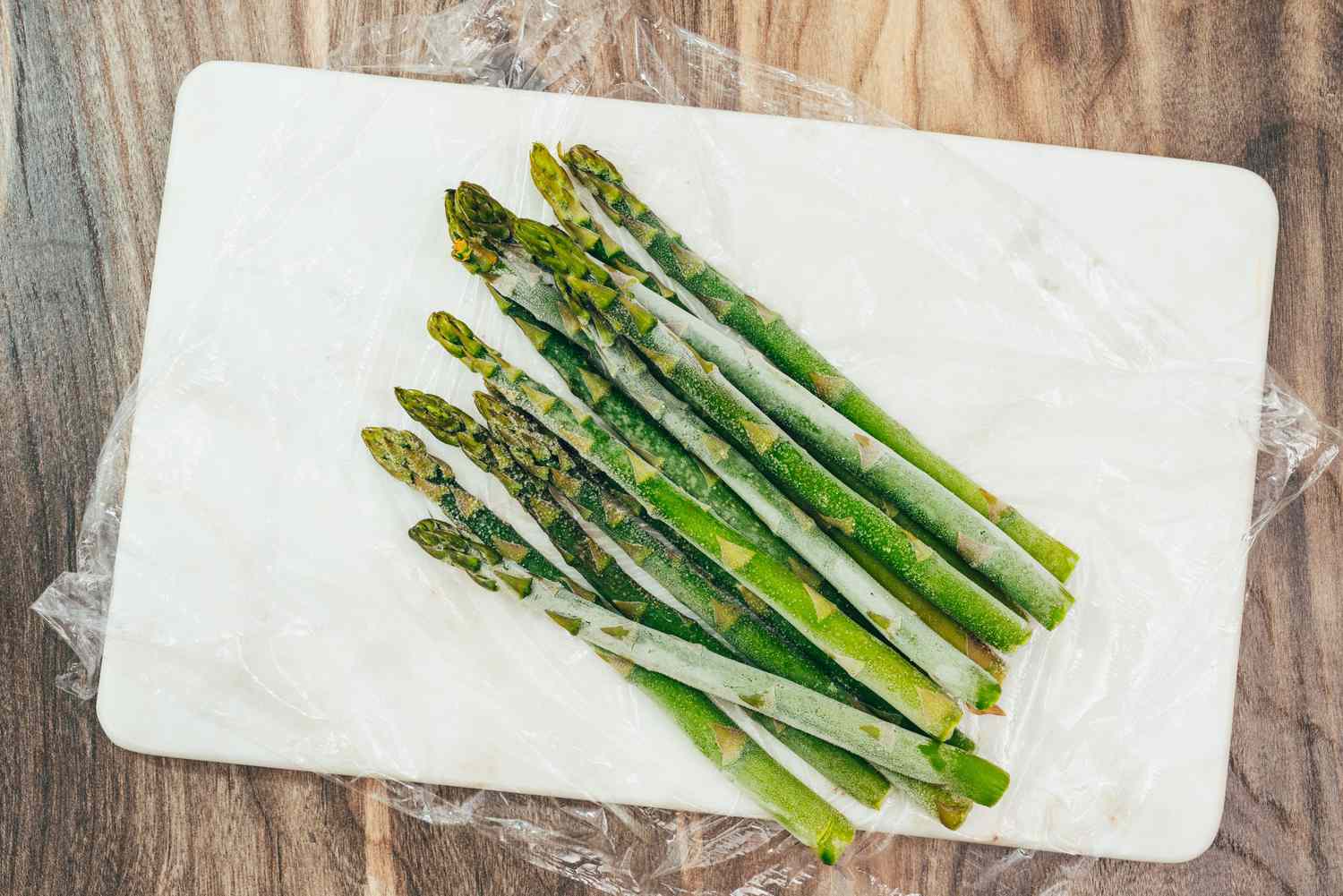

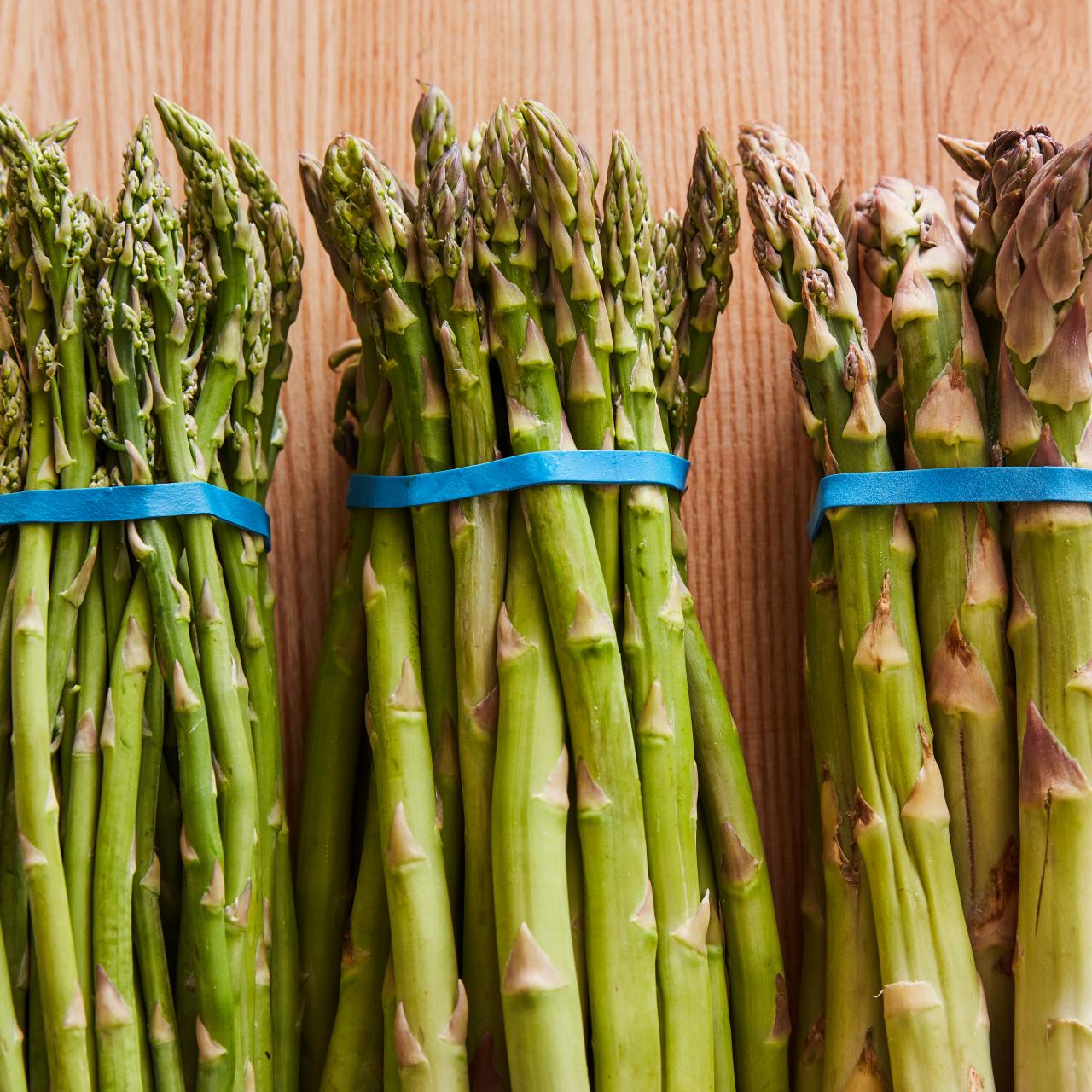
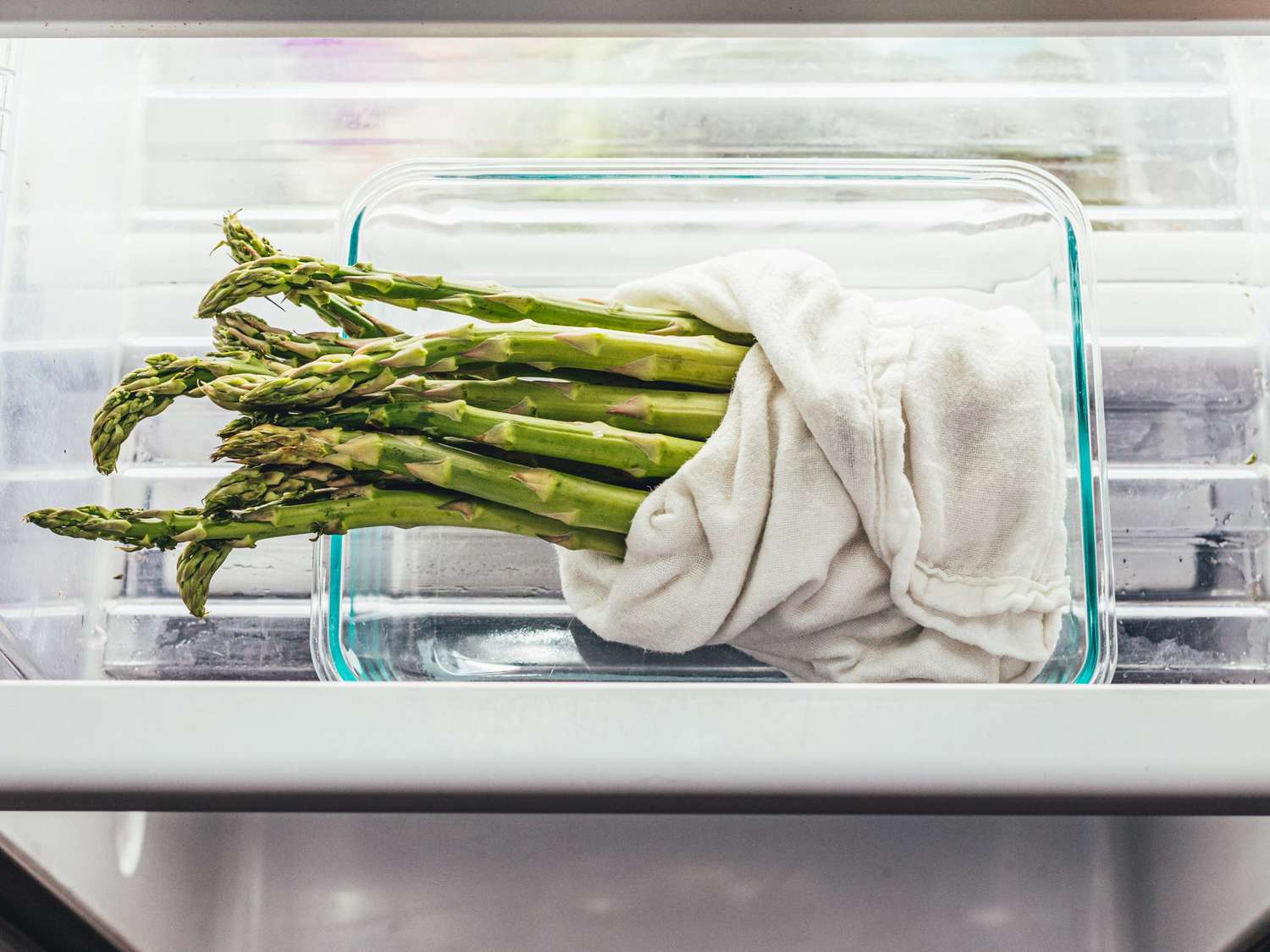




0 thoughts on “How To Store Fresh Asparagus”